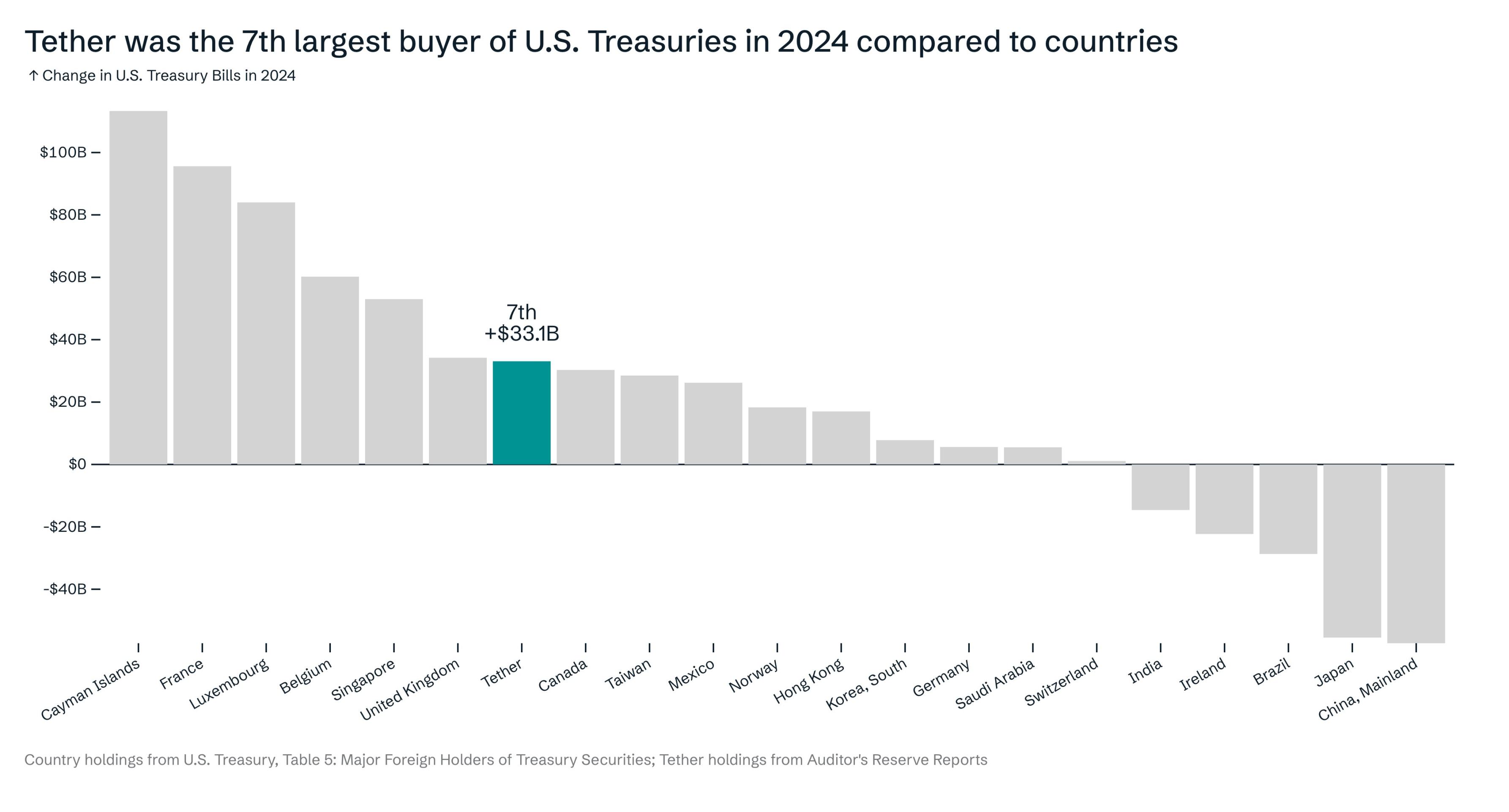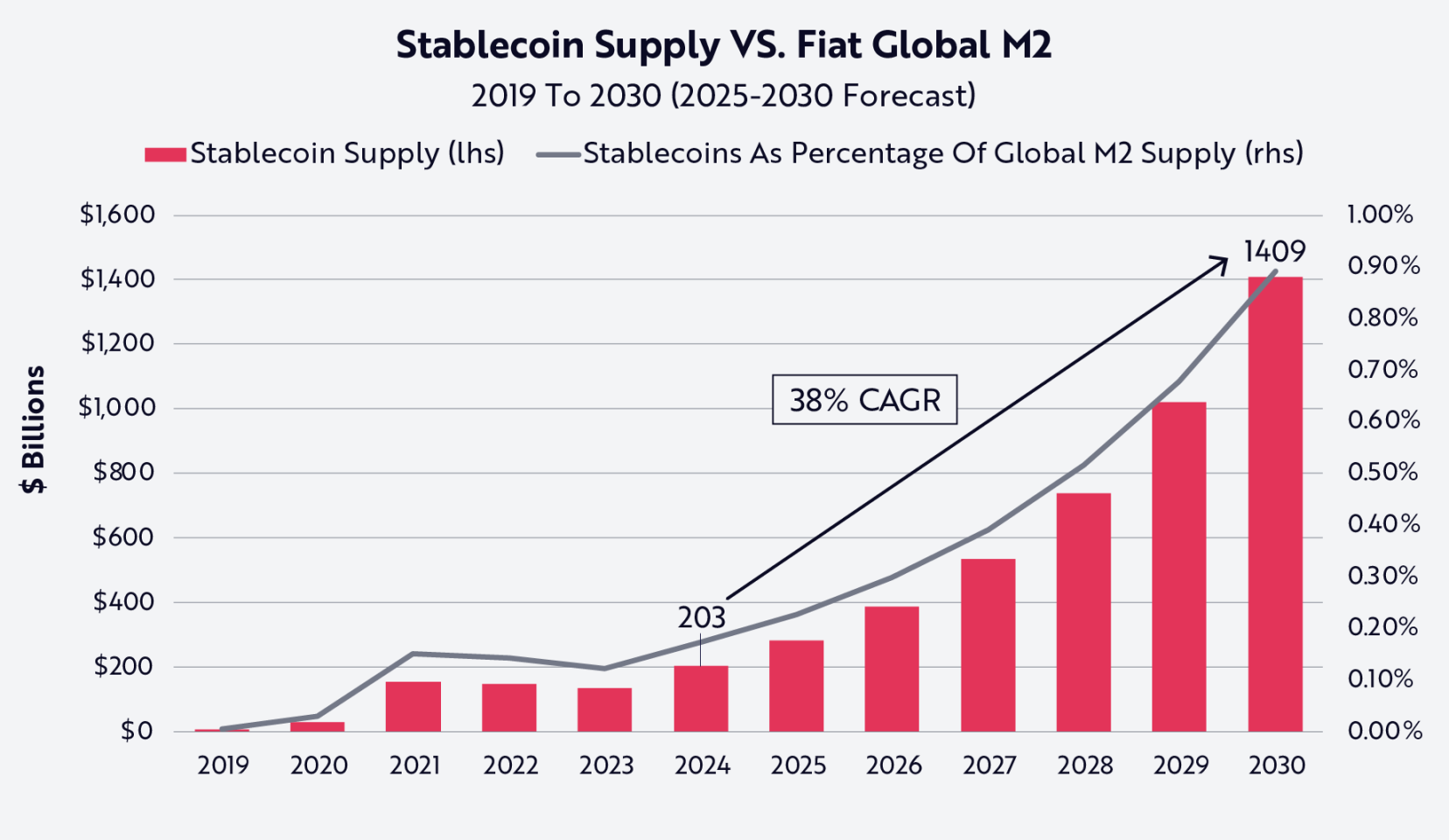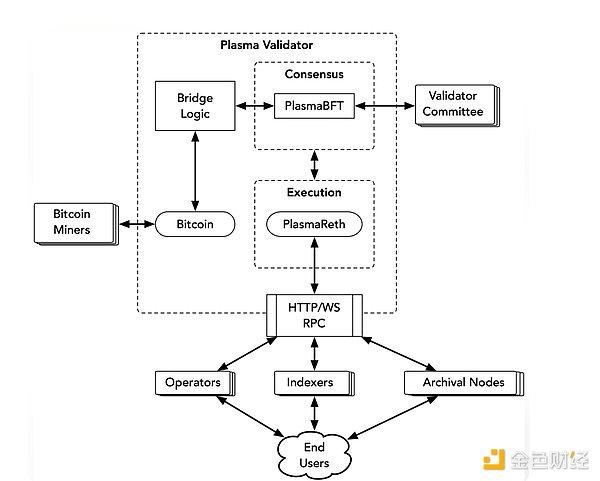Written by: Lorenzo Valente
Translated by: Luffy, Foresight News
In ARK's "Big Ideas 2025" report, we provide investors with deep insights into the crypto asset field, including stablecoins. Since January this year, stablecoin supply has surged 20% to $247 billion, exceeding 1% of the US M2 money supply. Tether and Circle continue to dominate the market with $150 billion and $61 billion in scale respectively, with a combined market share of over 85%.
We believe that stablecoins could become one of the most important strategic assets for the US government in the next 5-10 years. Why? Over the past 15 years, the proportion of foreign holders of US Treasury bonds has sharply declined, and this trend may continue due to evolving geopolitical pressures. Meanwhile, the Federal Reserve is unlikely to increase its US bond purchasing power due to ongoing quantitative tightening.
We believe the stablecoin market will experience exponential growth, with supply expected to grow 5-10 times in the next five years. This expansion could push US bond demand to levels previously supported by sovereign nations. Moreover, stablecoins are covering regions and populations not served by the traditional banking system, offsetting the current de-dollarization wave.
We elaborate on stablecoins' arguments and analysis in six parts:
Showing the continuous decline in holdings of major US Treasury bond holders historically;
Arguing that macroeconomic dynamics (including geopolitical changes) reduce these countries' interest in US bond investments;
Describing how persistent inflation reduces the possibility of large-scale bond purchases by the Federal Reserve in the short term;
Explaining how stablecoins fill the demand vacuum left by historical major US Treasury bond holders;
Elaborating on how stablecoins backed by US Treasuries promote trade like a "Trojan horse" and bring US dollars back to US bonds;
Arguing that stablecoins have significantly enhanced the global dominance of the US dollar.
The US government is losing its largest bond buyers
[The rest of the translation follows the same professional and accurate approach]Despite the Trump administration's efforts to lower long-term US Treasury bond yields, interest rates are more likely to rise in the absence of significant declines in inflation and real growth or new sources of Treasury demand. As the largest US Treasury holder's demand continues to decline and trade partners significantly reduce their dependence on US Treasuries due to trade wars, increased supply may overwhelm bond investors.
Can Tether and Circle Take Over the Relay Baton from China and Japan and Boost US Treasury Demand?
In recent years, despite the Biden administration's negative attitude towards digital assets, the stablecoin market has continued to surge. Against the backdrop of volatile crypto markets, stablecoin issuers have quietly become one of the world's largest US Treasury holders, as shown below:

Data source: ARK, as of May 15, 2025
On January 31, 2025, Tether's annual audit report revealed stunning 2024 financial performance: annual profit of $13.7 billion, with $6 billion earned in the fourth quarter alone. Additionally, the company issued $23 billion in USDT stablecoins in the fourth quarter, with an annual issuance of $45 billion. As of the latest transparency report in March 2025, Tether currently holds $98 billion in US Treasuries.
Meanwhile, as of late January, the second-largest stablecoin issuer, Circle, held over $22 billion in US Treasuries. Tether and Circle combined have become the 18th largest US Treasury holder, behind South Korea but ahead of Germany. Looking closely at 2024, Tether was the seventh-largest US Treasury buyer (after the UK and Singapore), while the largest sellers were China and Japan.

Data source: Ardoino 2025, as of May 15, 2025
At their current issuance rate, we believe they are poised to surpass four to five countries by year-end.
In ARK's 'Big Ideas 2025', we estimate that the total stablecoin supply could reach $1.4 trillion by 2030. If Tether and Circle maintain their current market share and Treasury allocation, they could collectively hold over $660 billion in US Treasuries, close to China's current $772 billion position, second only to China and Japan.

Source: ARK, data as of December 31, 2024
Clearly, Tether, Circle, and the broader stablecoin industry may become one of the largest sources of US Treasury demand in the coming years and potentially replace China and Japan as the largest holders by 2030. If so, the stablecoin industry could make a significant contribution to lowering US long-term interest rates.
(The translation continues in the same manner for the rest of the text, maintaining the specified translations for specific terms.)
Data source: ARK, as of December 31, 2024
In just over five years, stablecoins have covered approximately 200 million users globally, representing 15-20% of non-US dollar holders. Considering the dollar has been in circulation for centuries, this is an astonishing achievement.
Given USDT's powerful influence in emerging markets and its status as the largest stablecoin by supply, we can assume that USDT holders constitute a significant proportion of net new dollar holders, with low overlap with paper dollars and dollar accounts.
Despite being misunderstood and criticized, stablecoins have undergone a dramatic transformation after the FTX and LUNA collapses. In fact, the Trump administration, the new crypto "czar", and many legislators are now praising stablecoins as strategic assets, effectively strengthening the dollar's global dominance by creating continuous demand for US Treasury bonds. Therefore, Tether, Circle, and the entire stablecoin industry may evolve into one of the most reliable and resilient financial allies of the US government, ensuring long-term support for US Treasury bonds while consolidating the dollar's global trade position.








